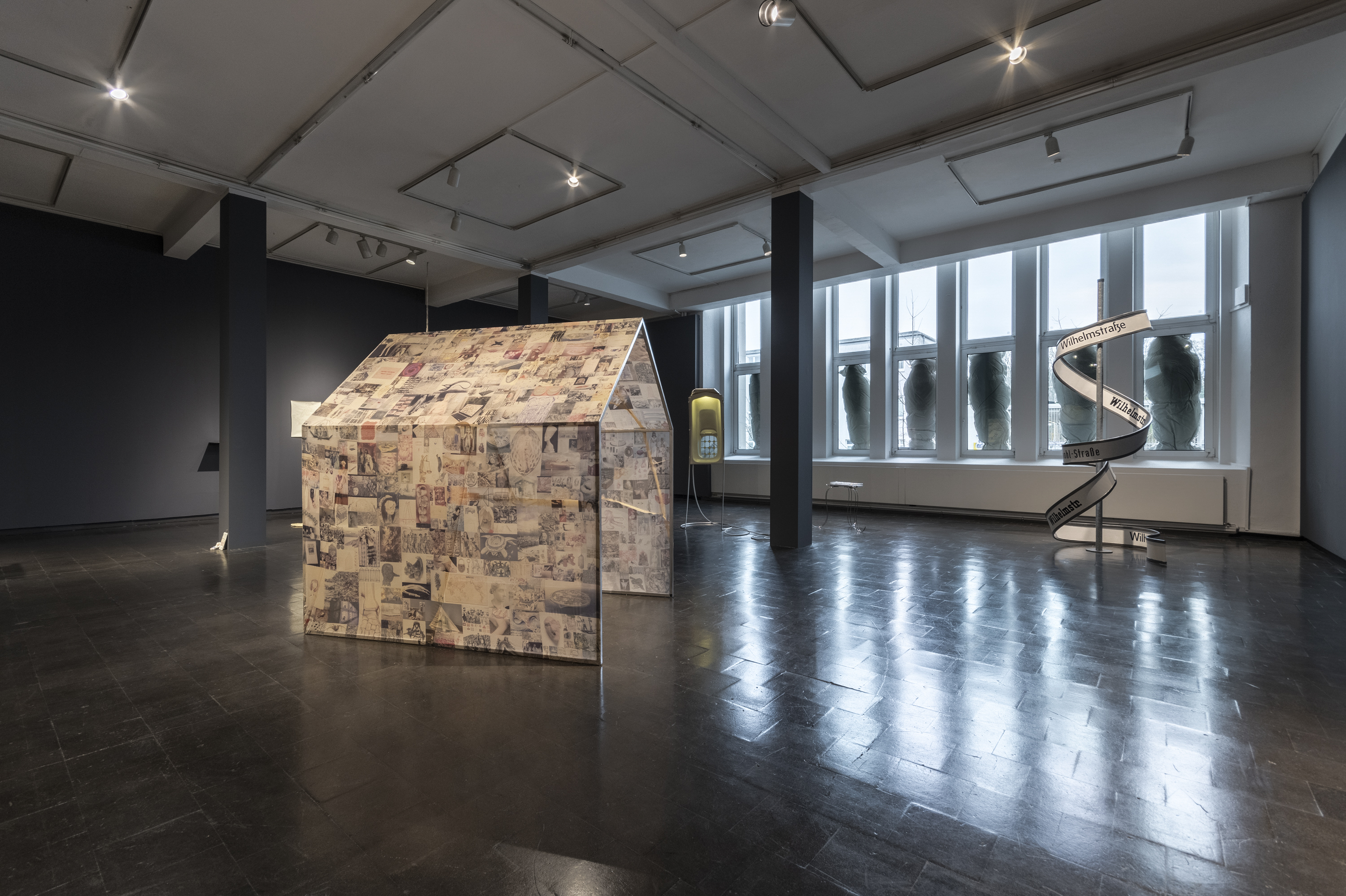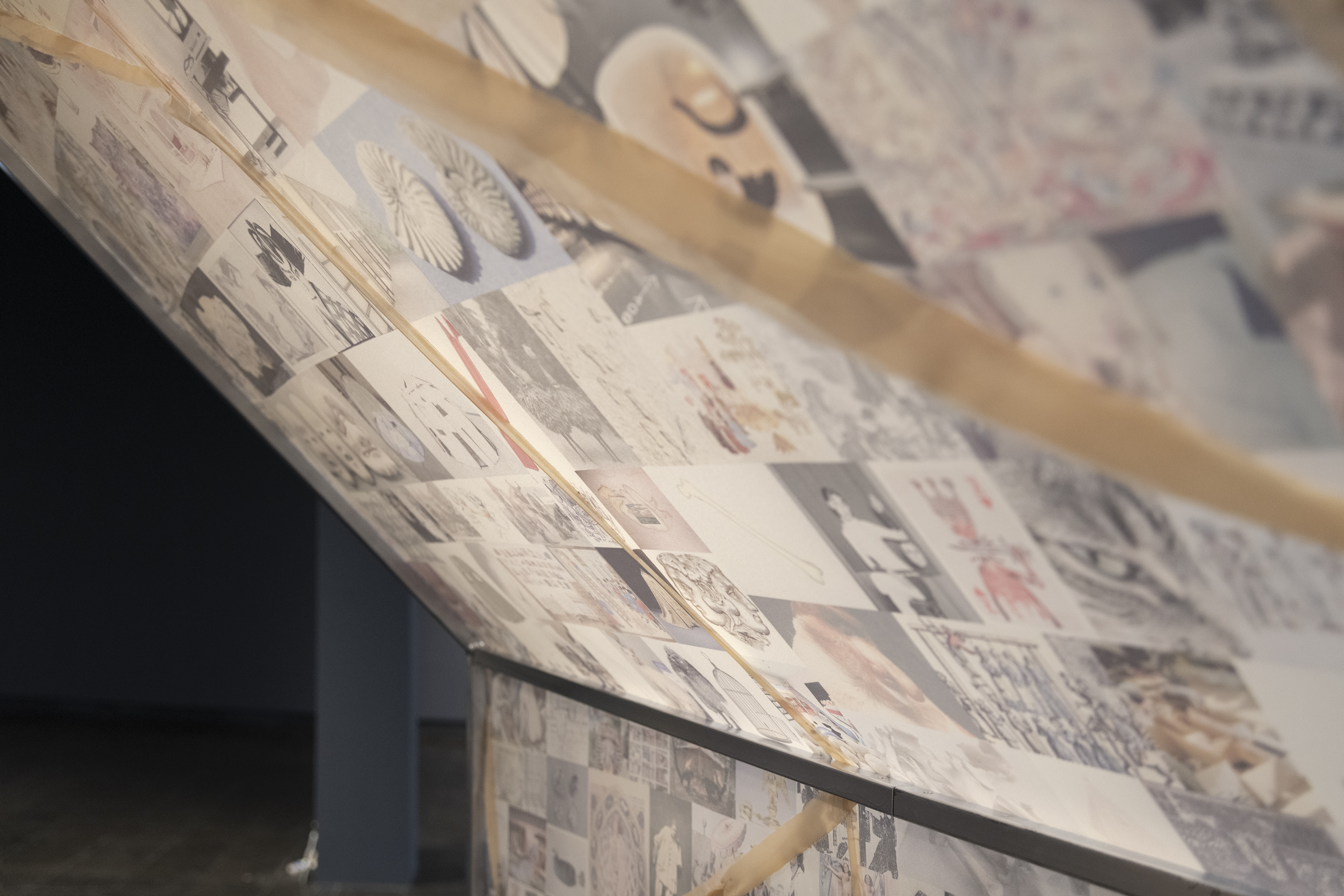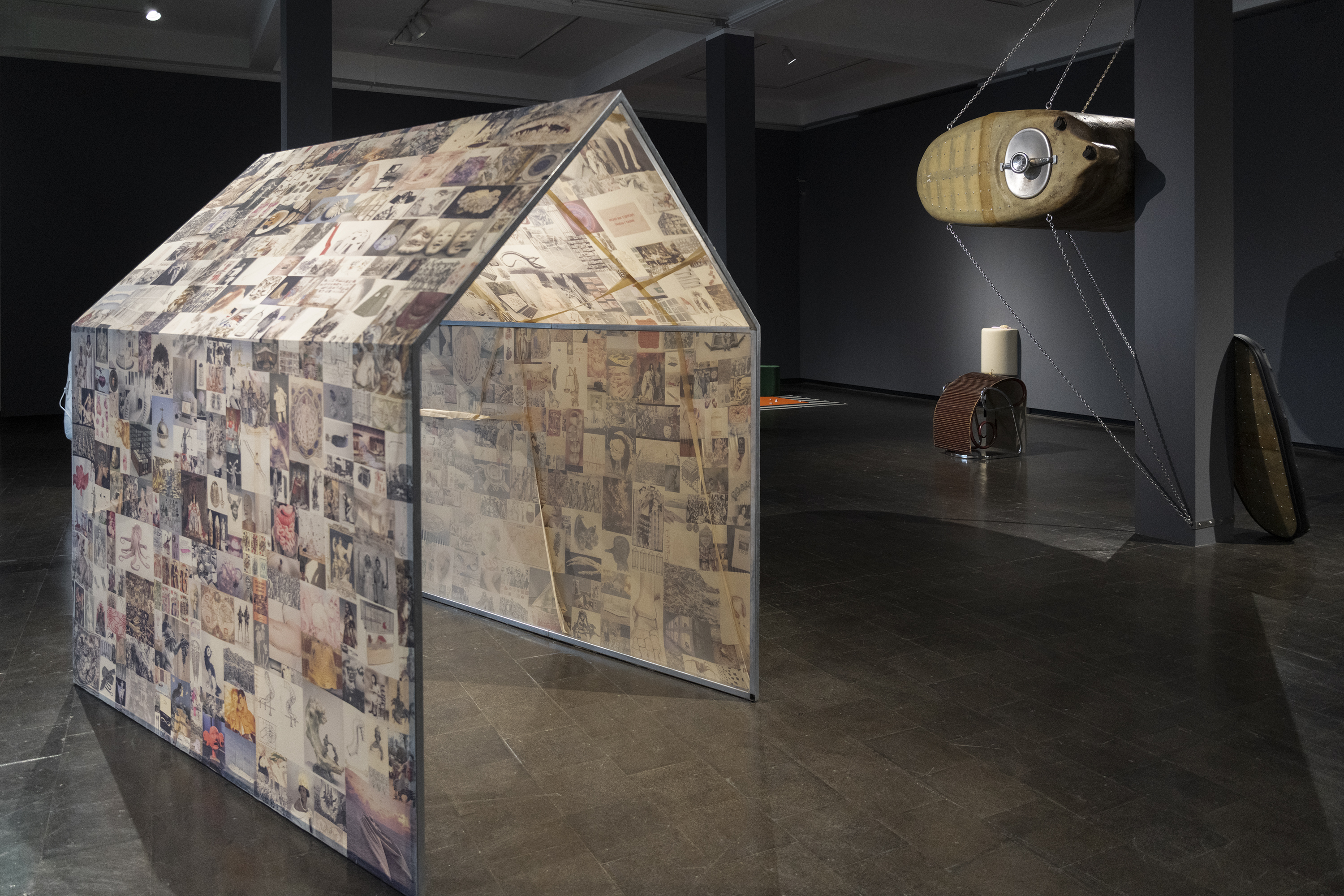-1.jpg)
.jpg)





The Memory House
Although the individual drawings, photos, films and installations by Isabella Fürnkäs are singular works with their own titles, they only unfold their full effect in their entirety. They are fictions and yet they are based in real life and thus they complement and reinforce each other. This is why the artist has grouped the individual works under the common title Inner workings, with the subtitle Das fressende Zimmer. With this title alone, she contrasts today’s cult of the flawless exterior of bodies and objects with the uncovering and exposure of what is throbbing, flowing, being digested, moldering, decaying and aging beneath the surface.
For example the small house that is set up in the entrance room of the Clages Gallery. The walls are formed by a transparent tights fabric printed with an abundance of photos, which gives the house a physicality. The fabric alone and especially the flood of images are uncanny. The pictures show decapitated queens, human entrails, pornographic scenes and witches... They are traumatic images from the cultural memory reservoir of the most diverse cultural epochs. They attract the eye, they fascinate and they repel. Disturbed by the images, one hardly dares to look inside the house. And indeed; rumpled sheets, disorder... What has happened here?
Something similar happens when looking at the small drawings Mini Vagina, which is framed in a plexiglas block. It actually shows the vagina in detail. And although the drawing is very small, it has an intensity that virtually sucks the eye in. This intensity is heightened by the fact that the drawing is mounted very low on the wall, so that if you really want to look at it, you are forced either to bend forward or even to kneel. But already one averts one’s gaze. You feel caught. But at what? Even the brief glimpse is enough to make us witnesses, more than that; it makes us enter the moist cave of the vagina as before the uncanny happenings in the house. And that is precisely what distinguishes Fürnkäs’ works: They are staged in such a way that we become participants in an extremely intimate event and thus somehow complicit.
With this approach, Fürnkäs joins the ranks of such artists as the Vietnamese artist Danh Vo or the Georgian artist Tolia Astakhisvili. But unlike them, there is another level to her work: the comic. In the clutter of the house lie a computer modeled out of clay. In the other rooms, mobile phones, also unskillfully modeled out of clay, are piled up in cupboards and drawers. Their clumsy, mate- rial-heavy, archaic appearance is in stark contrast to the elegant electronic devices with perfect surfaces, such as those made by Apple. This makes them look ridiculous. And suddenly, thanks to this awkwardness and ridiculousness of the clay devices, a sense of the enormity, the reckless- ness, with which we outsource our own inner life, our most intimate longings, dreams and desires from our own unpredictable bodies, susceptible to disturbances and injuries, to the mechanically controlled inner life of the lifeless computer.
Remember how you used to build pillow fortresses as a child? The Memory House (2023) in the first room is similarly comforting (at first glance at least). Inside, electric outlets and a notebook made up of ceramics are draped in white bed sheets. A sketchbook peeks out. The outer shell of the house is full of images: naked cats, artworks, anatomic illustrations, product designs, porn.
- Text by Noemi Smolik
The Memory House, 2023
Print on silk cloth, metal structure, bed sheet, 200 x 200 x 150 cm
full installation with:
"Laptop" (Ceramic), "Extension cord" (Ceramic), "My Bed" (Drawing)
Kunsthalle Recklinghausen (2023), Clages, Cologne (2023)